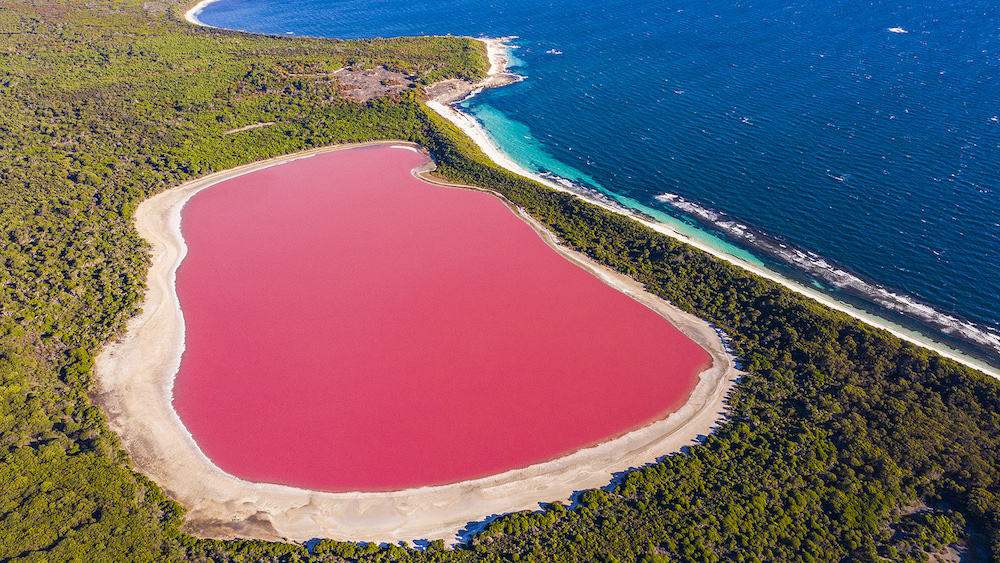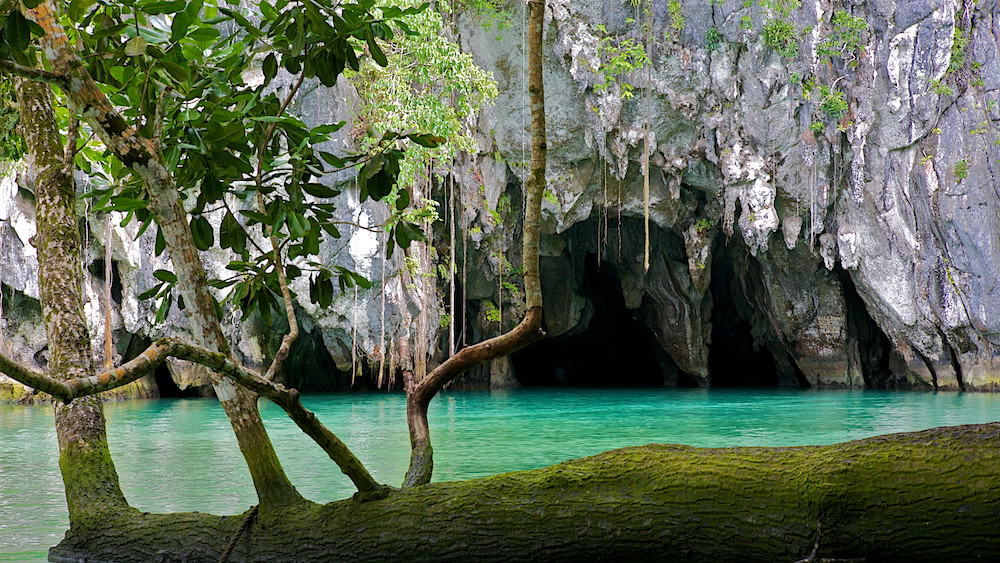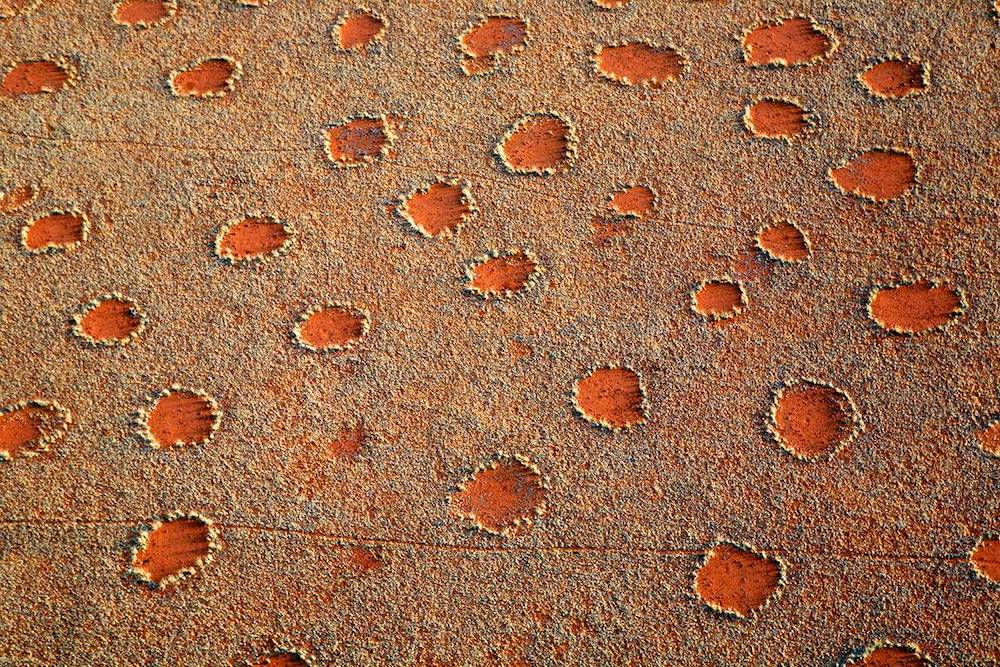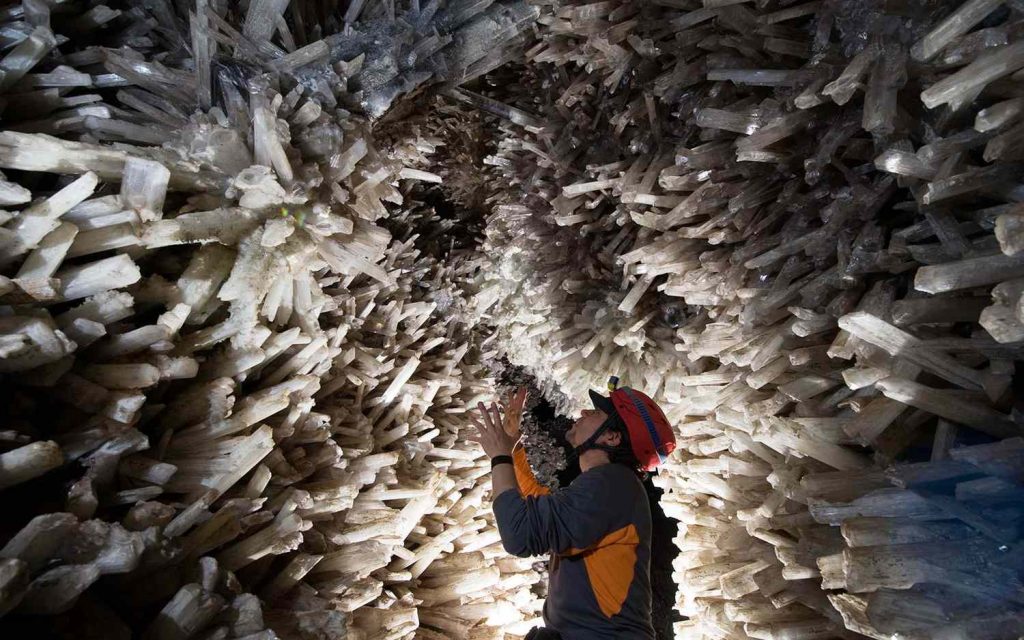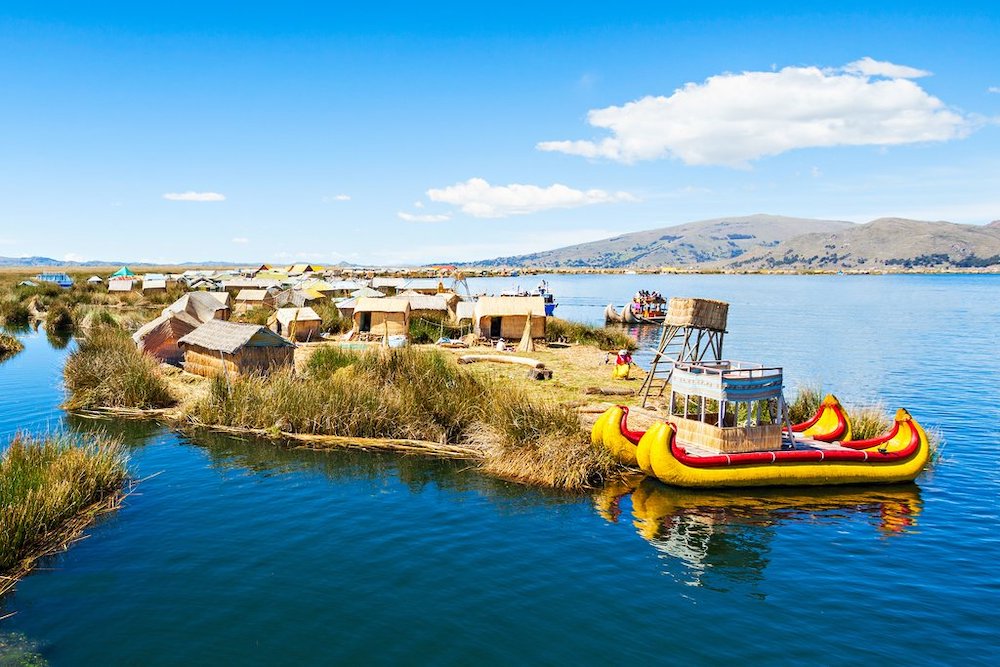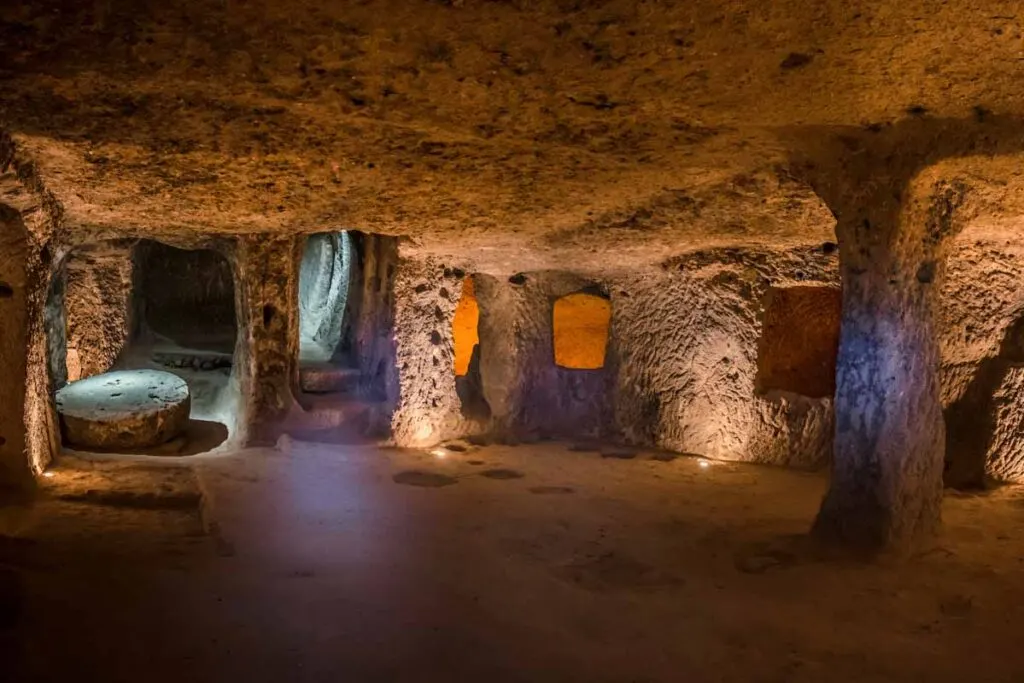Welcome to a mesmerizing journey through the world’s most astonishing natural wonders! In this captivating journey, we delve into Earth’s most enigmatic phenomena, from the perplexing Bermuda Triangle to the sinking city of Venice battling nature’s forces.
Discover the astonishing Giant’s Causeway steeped in myth, the mind-boggling buoyancy of the Dead Sea, and the baffling moving rocks of Death Valley. Venture into the realm of the unusual with Hawaii’s green sand beaches and Canada’s Magnetic Hill.
Join us as we unveil the secrets of Easter Island’s statues, Arctic ice circles, and Namib Desert fairy circles. Embark on this awe-inspiring expedition into the world’s natural wonders!
Table of Contents
- 1. Here is the list of 22 Jaw-Dropping Natural Wonders
- 1.1 The Mystery of the Bermuda Triangle
- 1.2 The Enigmatic Stonehenge
- 1.3 The Peculiar Gravity Hill Phenomenon
- 1.4 The Surprising Sinking City of Venice
- 1.5 The Astonishing Giant’s Causeway
- 2. More Incredible Natural Wonders
- 2.1 The Strange Green Sand Beaches of Hawaii
- 2.2 The Unusual Magnetic Hill in Canada
- 2.3 The Mind-Blowing Dead Sea’s Buoyancy
- 2.4 The Curious Island of Socotra
- 2.5 The Fascinating Blood Falls in Antarctica
- 3. More Fascinating Jaw-Dropping Natural Wonders
- 3.1 The Bizarre Moving Rocks of Death Valley
- 3.2 The Intriguing Wave Rock in Australia
- 3.3 The Unique Pink Lake of Australia
- 3.4 The Mysterious Easter Island Statues
- 3.5 The Unexplained Mystery of the Nazca Lines
- 4. More Out of This World Natural Wonders
- 4.1 The Astonishing Underground River in the Philippines
- 4.2 The Strange Ice Circles of the Arctic
- 4.3 The Enigmatic Fairy Circles of Namibia
- 4.4 The Astonishing Giant Crystal Cave in Mexico
- 4.5 The Surprising Floating Islands of Lake Titicaca
- 4.6 The Mysterious Door to Hell in Turkmenistan
- 4.7 The Unusual Underground City of Derinkuyu in Turkey
Here is the list of 22 Jaw-Dropping Natural Wonders
The Mystery of the Bermuda Triangle

You might be intrigued by the mysterious disappearances that occur in the Bermuda Triangle. This infamous region, located in the western part of the North Atlantic Ocean, has captivated the imagination of many.
The Bermuda Triangle, also known as the Devil’s Triangle, is roughly bounded by Miami, Bermuda, and Puerto Rico. Countless ships and planes have seemingly vanished within its boundaries, leading to various theories and speculations.
However, as a geography expert, I must provide you with accurate information. The truth is that the Bermuda Triangle is not as mysterious as it may seem. Many of the disappearances can be attributed to natural causes or human errors.
The area experiences unique weather patterns, including frequent storms and unpredictable currents. These conditions, combined with the heavy traffic of ships and planes passing through, increase the likelihood of accidents occurring.
Furthermore, the Bermuda Triangle is located near the Gulf Stream, a powerful ocean current that can quickly carry debris away, making it difficult to locate and recover wreckage. Additionally, the vastness of the ocean and the lack of reliable data further contribute to the perceived mystery of this region.
While the Bermuda Triangle has undoubtedly captured our imagination, it is important to approach the topic objectively. By analyzing the available data and considering all factors involved, we can gain a clearer understanding of the disappearances that occur in this enigmatic stretch of the ocean.
The Enigmatic Stonehenge

It’s fascinating to learn about the theories and historical significance behind Stonehenge, an ancient monument in England that continues to puzzle researchers. Stonehenge is located on Salisbury Plain, in Wiltshire, and is believed to have been constructed between 3000 and 2000 BCE.
This enigmatic site consists of a circular arrangement of massive standing stones, some weighing over 25 tons. The purpose of Stonehenge remains unclear, but many theories have been proposed. Some believe it was a burial site, while others suggest it was an astronomical observatory or a place of religious rituals.
Stonehenge’s construction required immense effort and advanced engineering skills. The stones used in its construction were transported from as far as 140 miles away, and the precision of their placement is astounding considering the lack of modern tools. The alignment of certain stones with the solstice and equinox points adds to the mystery surrounding its purpose.
Stonehenge’s historical significance cannot be overstated. It is a UNESCO World Heritage site and attracts millions of visitors each year. It serves as a symbol of ancient human ingenuity and cultural development.
The Peculiar Gravity Hill Phenomenon

When driving up the peculiar Gravity Hill, you may feel as if you are defying the laws of physics. Gravity Hills, also known as magnetic hills or mystery hills, are fascinating geographical phenomena that can be found in various locations around the world. These hills appear to defy gravity by causing objects, or even vehicles, to roll uphill against the force of gravity.
The explanation behind this strange phenomenon lies in an optical illusion. Although it may seem like you are ascending a hill, you are actually descending. The surrounding landscape creates an optical illusion that makes it appear as if you are going uphill. This illusion, combined with the slope of the road, gives the impression that gravity is working in reverse.
Gravity Hills can be found in different parts of the world, including the United States, India, Australia, and Canada. Each location has its own unique characteristics and explanations for the phenomenon. Some attribute it to magnetic fields, while others believe it is solely an optical illusion.
The Surprising Sinking City of Venice
Can you believe that Venice is sinking due to subsidence and rising sea levels? It may seem unbelievable, but it is indeed true. Venice, the picturesque city of canals and gondolas, is facing a serious threat from the forces of nature.
Subsidence, the sinking of land, is one of the main causes of Venice’s gradual descent into the Adriatic Sea. The extraction of groundwater from underground aquifers has weakened the city’s foundations, causing it to sink at a rate of approximately 2 millimeters per year. This may not sound like much, but over time, it has significant consequences.
Adding to the problem is the rising sea levels caused by global warming. As the polar ice caps melt and ocean temperatures rise, the sea levels around the world are increasing. In the case of Venice, this means that the lagoon waters are encroaching upon the city, leading to frequent flooding known as acqua alta.
Efforts have been made to combat this issue, such as the construction of the MOSE project, a system of mobile barriers designed to protect the city from high tides. However, the long-term sustainability of such measures remains uncertain.
As Venice battles against the forces of subsidence and rising sea levels, it serves as a stark reminder of the challenges faced by coastal cities worldwide.
The Astonishing Giant’s Causeway
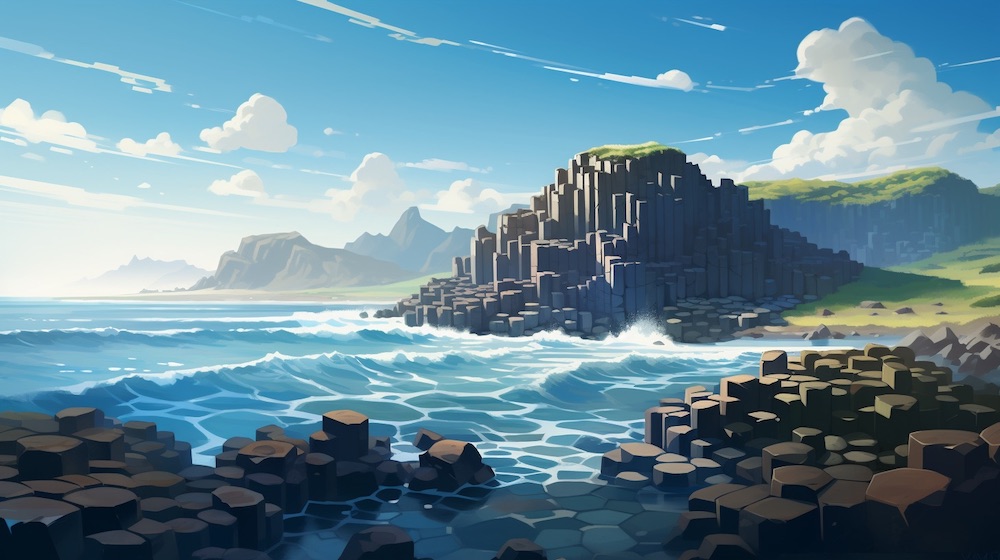
Have you ever visited the Astonishing Giant’s Causeway and marveled at the natural wonder of its hexagonal basalt columns?
This breathtaking site, located on the coast of County Antrim in Northern Ireland, is a true geological marvel that never fails to captivate visitors. Here are three fascinating facts about the Giant’s Causeway that will ignite your curiosity:
- The Giant’s Causeway was formed around 50-60 million years ago during a period of intense volcanic activity. As molten lava cooled and contracted, it created over 40,000 interlocking basalt columns, each with its own distinct hexagonal shape.
- The tallest of these columns can reach heights of up to 39 feet, towering over the surrounding landscape. These massive structures, resembling giant stepping stones, create a surreal and otherworldly atmosphere that is truly awe-inspiring.
- The Giant’s Causeway is not just a stunning natural landmark; it is also steeped in myth and legend. According to Irish folklore, the columns were built by the giant Finn McCool, who used them as a pathway to reach Scotland. The legend adds an element of magic and wonder to an already extraordinary place.
More Incredible Natural Wonders
The Strange Green Sand Beaches of Hawaii
Did you know that the strange green sand beaches of Hawaii are formed by a rare mineral called olivine?
Olivine, also known as peridot, is a silicate mineral that is formed deep within the Earth’s mantle. When volcanic eruptions occur, the lava carries olivine crystals to the surface, where they eventually break down and erode over time, creating the unique green sand.
The olivine found on these beaches is relatively pure, with minimal impurities, giving it its vibrant green color. One of the most famous green sand beaches in Hawaii is Papakolea Beach, located on the Big Island. The beach gets its distinct color from a nearby cinder cone volcano named Pu’u Mahana.
The volcanic activity in the region has resulted in the erosion of the olivine-rich lava flows, leaving behind the mesmerizing green sand. It’s important to note that these green sand beaches are quite rare and can only be found in a few locations around the world.
The Unusual Magnetic Hill in Canada
You should definitely visit the unusual Magnetic Hill in Canada and experience the mind-bending phenomenon of objects appearing to roll uphill. Located in Moncton, New Brunswick, this optical illusion has intrigued visitors for years. As you drive towards the hill, you will notice a few peculiar things:
- The road seems to defy gravity, as cars left in neutral actually roll uphill.
- Your sense of balance will be tested as you stand on the hill and feel like you’re leaning forward, even though you’re standing upright.
- Water appears to flow uphill, defying the laws of nature.
So, how does this phenomenon occur? The Magnetic Hill is actually an example of a gravity hill, where the surrounding landscape creates an optical illusion that makes objects appear to move against gravity.
While it may seem like magic, it is actually the result of a cleverly designed landscape. The hill’s unique shape and the arrangement of trees and other objects create a visual distortion that tricks our brain into perceiving uphill movement.
The Mind-Blowing Dead Sea’s Buoyancy
Step into the mesmerizing waters of the Dead Sea and experience the mind-blowing buoyancy that defies all expectations. The Dead Sea, located between Jordan to the east and Israel and Palestine to the west, is a unique geographical wonder.
Its high salt concentration, around 10 times saltier than the ocean, makes it impossible for swimmers to sink. As you enter the water, you’ll immediately feel the astonishing sensation of effortlessly floating on the surface. This phenomenon occurs due to the high density of the water, caused by the large amounts of salt and minerals it contains.
The Dead Sea’s buoyancy has attracted visitors from around the world, seeking both relaxation and health benefits. The mineral-rich mud found along its shores has been used for centuries in therapeutic spa treatments, believed to have healing properties for various skin conditions.
It’s important to note that while buoyancy is a fascinating aspect of the Dead Sea, the high salt concentration also means that swallowing the water can be harmful. So, remember to avoid ingesting it and enjoy the mind-blowing experience of floating effortlessly in this extraordinary natural wonder.
The Curious Island of Socotra
As you explore the curious island of Socotra, you’ll be amazed by its unique flora and fauna. Located in the Indian Ocean, off the coast of Yemen, Socotra is a natural wonder that has captivated the attention of geographers worldwide. Here are a few strange geographical facts about this enchanting island:
- Socotra is home to the dragon’s blood tree, a mythical-looking species with umbrella-shaped branches and bright red sap. These trees can reach heights of up to 30 feet and have adapted to survive in the harsh desert-like conditions of the island.
- The island’s landscape is dominated by limestone plateaus and towering cliffs, creating a dramatic and surreal scenery. These formations have been eroded over millions of years, shaping the island’s unique topography.
- Socotra is a UNESCO World Heritage Site and has been recognized as one of the most biodiverse places on Earth. It is home to numerous endemic species, including the Socotra cormorant, Socotra bunting, and Socotra warbler.
The Fascinating Blood Falls in Antarctica
Take a moment to delve into the mystery surrounding the fascinating Blood Falls in Antarctica, as you uncover the secrets hidden beneath the icy surface. Located in the McMurdo Dry Valleys, this natural wonder is a sight to behold. The falls, with their deep red color, flow from the Taylor Glacier and create a striking contrast against the surrounding white landscape.
But what causes this unique phenomenon? The answer lies in the iron-rich waters that have been trapped beneath the glacier for over a million years. As the water emerges from the glacier, it comes into contact with oxygen in the air, causing the iron to oxidize and turn the water red.
The Blood Falls have captivated scientists for decades, as they provide a rare glimpse into the ancient history of Antarctica. By studying the microbial life found in the falls, researchers have gained valuable insights into the extreme conditions under which life can exist. This discovery has significant implications for the search for life on other planets and moons in our solar system.
More Fascinating Jaw-Dropping Natural Wonders
The Bizarre Moving Rocks of Death Valley

Have you ever wondered how the bizarre moving rocks of Death Valley mysteriously glide across the desert floor? It’s a phenomenon that has puzzled scientists for decades. These rocks, weighing up to hundreds of pounds, seem to move on their own, leaving long tracks behind them. Here are three fascinating facts about this geological mystery:
- The first documented observation of the moving rocks was in the early 1900s. Since then, researchers have been trying to unravel the mystery. They have discovered that the rocks move during rare winter rainstorms when a thin layer of water covers the dry lake bed. The water acts as a lubricant, allowing the rocks to slide across the muddy surface.
- The rocks move at a remarkably slow pace, averaging about 15 feet per minute. Some tracks stretch for hundreds of yards, indicating that the rocks have been moving for an extended period. It is believed that the rocks are pushed by gentle winds, which are prevalent in Death Valley.
- The movement of the rocks is not a continuous process. It can occur over several years or even decades. Researchers have set up time-lapse cameras to capture the rare moments when the rocks are in motion, providing valuable insights into this enigmatic phenomenon.
The moving rocks of Death Valley continue to captivate the imagination of geographers and curious visitors alike. While many theories have been proposed, the exact mechanisms behind their movement remain a subject of ongoing research.
The Intriguing Wave Rock in Australia
You’ll be amazed by the unique patterns and colors found on Wave Rock in Australia. This incredible natural formation is located in Hyden, Western Australia, and is a prominent example of a granite inselberg. Standing at approximately 15 meters high and stretching over 110 meters in length, Wave Rock resembles a massive ocean wave frozen in time.
The distinct wave-like shape was formed over millions of years through the process of weathering and erosion. The striking patterns on the rock’s surface are a result of chemical weathering, with iron-rich minerals creating vibrant red and orange hues. Wave Rock is not only a visual marvel but also holds cultural significance.
The traditional owners of the land, the Noongar people, consider the rock to be a sacred site and it plays an important role in their Dreamtime stories. Visitors to Wave Rock can explore the surrounding area, which includes a wildlife park and a museum showcasing the region’s natural and cultural history.
The Unique Pink Lake of Australia
If you’re interested in nature’s fascinating wonders, the unique pink lake of Australia will surely capture your attention. Located in Western Australia, the Hutt Lagoon is a natural phenomenon that mesmerizes visitors with its vibrant hues. Here are three remarkable facts about this extraordinary pink lake:
- The captivating pink color of the lake is caused by the presence of a type of algae called Dunaliella salina. This microorganism produces a red pigment that gives the water its distinctive pink hue.
- The intensity of the pink color can vary depending on several factors, including the time of day, weather conditions, and the concentration of salt in the water. During sunrise and sunset, the lake often appears even more vibrant, creating a breathtaking sight.
- The Hutt Lagoon is not the only pink lake in Australia. In fact, there are several other pink lakes around the country, each with its own unique shade of pink. Some of the most famous ones include Lake Hillier in Western Australia and Lake Bumbunga in South Australia.
The Mysterious Easter Island Statues

You should explore the mystery surrounding the Easter Island statues and discover their hidden secrets. These massive stone figures, known as moai, have captivated the world for centuries.
Located on Easter Island, a remote island in the Pacific Ocean, these statues stand tall, with some reaching heights of over 30 feet and weighing up to 75 tons. The moai were carved by the Rapa Nui people, the indigenous inhabitants of the island, between the 13th and 16th centuries.
The purpose of the moai remains a subject of debate. Some theories suggest that they were created to honor ancestors or important leaders, while others believe they were built to protect the island. The statues’ construction and transportation methods are equally puzzling.
It is believed that the Rapa Nui used simple tools and techniques to carve the statues from the volcanic rock found on the island. They would then transport them to various locations around the island, a feat that required immense effort and engineering skills.
One of the most intriguing aspects of the moai is their placement. They are predominantly located along the coastline, facing inland. This has led to speculation that they were positioned to guard the island or act as a form of territorial marker. The exact reason for their placement, however, remains uncertain.
The Unexplained Mystery of the Nazca Lines
Surely, you’re curious about the unexplained mystery of the Nazca Lines, so let’s delve into the intriguing theories surrounding these ancient geoglyphs. The Nazca Lines are a series of massive drawings etched into the desert floor of southern Peru.
These enigmatic geoglyphs cover an area of nearly 450 square kilometers and consist of various shapes and figures, including animals, plants, and geometric patterns.
So, what are the theories surrounding these mysterious lines?
- Some researchers believe that the Nazca Lines were created by the Nazca people as a way to communicate with the gods. They may have been used for religious rituals or to mark important astronomical events.
- Another theory suggests that the lines were part of a massive irrigation system, designed to capture scarce water in the desert. The lines may have served as a way to guide water to the agricultural fields.
- Some experts propose that the Nazca Lines were used as a form of artistic expression or as a way to showcase the Nazca culture’s ingenuity and creativity.
More Out of This World Natural Wonders
The Astonishing Underground River in the Philippines
Did you know that the astonishing underground river in the Philippines is one of the longest navigable underground rivers in the world?
Located in Puerto Princesa Subterranean River National Park, this underground river stretches for approximately 8.2 kilometers and flows directly into the South China Sea. It was designated as a UNESCO World Heritage Site in 1999 and has been recognized as one of the New 7 Wonders of Nature.
The underground river boasts an impressive array of geological features. As you journey through its dark caverns, you will encounter stunning stalactites and stalagmites, formed over thousands of years by the slow dripping of water containing dissolved limestone. The river also houses several large chambers, with one of them measuring an astounding 360 meters long, 120 meters wide, and 65 meters high.
Aside from its geological wonders, the underground river is home to a rich and diverse ecosystem. It supports various flora and fauna, including several endemic species such as the Palawan peacock-pheasant and the Palawan hornbill. As you explore the river, you may also catch glimpses of macaques, monitor lizards, and bats.
To preserve this natural marvel, strict regulations have been implemented to protect the underground river. Visitors are required to obtain permits and are accompanied by guides who ensure the preservation of the site.
The Strange Ice Circles of the Arctic
There are six strange ice circles in the Arctic, and each one is a fascinating natural phenomenon. These ice circles, also known as ice discs or ice pans, are formed when a chunk of ice breaks off from a larger ice sheet and begins to rotate.
As it spins in the water, the edges of the ice disc become rounded due to the constant friction with the surrounding water. This creates a perfectly circular shape that can range in size from a few meters to several kilometers in diameter.
The sight of these ice circles is truly captivating. Imagine standing on the frozen Arctic tundra, surrounded by a vast expanse of white, and suddenly coming across a perfectly symmetrical circle of ice floating on the water.
The contrast between the icy blue water and the white snow-covered landscape creates a mesmerizing scene. As you approach the ice circle, you can see the sunlight reflecting off its smooth surface, creating a shimmering effect that seems almost magical.
Scientists have studied these ice circles to understand their formation and behavior. They have discovered that the rotation of the ice disc is influenced by various factors, such as wind, water currents, and the shape of the ice itself.
These findings have helped shed light on the intricate processes that occur in the Arctic, highlighting the delicate balance between ice, water, and the forces of nature.
The Enigmatic Fairy Circles of Namibia
You can’t help but wonder about the mysterious formation of the fairy circles in Namibia, with their intricate patterns and unexplained origins.
These enigmatic circles are found in the grassy plains of the Namib Desert, stretching across thousands of kilometers. The circles consist of barren patches of land, surrounded by a ring of taller vegetation. Many theories have been proposed to explain their formation, but none have been proven definitively.
One prevailing theory suggests that termites are responsible for the creation of these circles. It is believed that termites construct underground nests, which lead to the emergence of barren patches.
The vegetation around the circles benefits from increased access to water and nutrients, resulting in the ring of taller grass or shrubs. Another theory suggests that competition for resources among plants is the cause, with the circles forming as a result of self-organization within the ecosystem.
Despite extensive research, the exact cause of the fairy circles remains a mystery. Scientists continue to study these formations, collecting data and conducting experiments to unravel the secrets behind their creation.
The Astonishing Giant Crystal Cave in Mexico
Take a moment to imagine yourself standing in awe inside the astonishing Giant Crystal Cave in Mexico, surrounded by massive crystals that stretch as far as the eye can see.
This natural wonder, located 300 meters below the surface in the Naica Mine, is a true geological marvel. Here are three remarkable features that will transport you to this extraordinary place:
- Enormous Crystals: Picture yourself gazing at crystals towering over 11 meters in length, and weighing up to 55 tons. These crystals, composed of selenite, are some of the largest ever discovered, resembling a surreal underground forest.
- Crystal Cathedral: As you explore the cave, you’ll come across the “Crystal Cathedral,” a cavernous space adorned with translucent crystals that beam with light. The cathedral’s ethereal glow creates an otherworldly ambiance, leaving you in awe of nature’s artistic prowess.
- Extreme Conditions: Brace yourself for the extreme environment within the cave. Temperatures soar to a scorching 58 degrees Celsius, with humidity levels reaching a staggering 99%. These conditions make it nearly impossible for humans to endure for more than a brief period, adding to the cave’s mystique.
This incredible subterranean spectacle, discovered by miners in 2000, offers a glimpse into the immense power and beauty of our planet. The Giant Crystal Cave is a true testament to the wonders that lie beneath the Earth’s surface.
The Surprising Floating Islands of Lake Titicaca
Did you know that the Surprising Floating Islands of Lake Titicaca are actually man-made structures constructed by the Uros people?
These incredible islands, located on the highest navigable lake in the world, are a fascinating example of human ingenuity and adaptability. The Uros people, who have inhabited the region for centuries, have developed a unique way of life centered around these floating islands.
The islands are made by layering totora reeds, a type of aquatic plant, on top of each other. The reeds are carefully woven together to create a thick, buoyant platform that can support the weight of the island and its inhabitants. The Uros people also use the reeds to construct their homes, boats, and even furniture.
Living on the floating islands presents both challenges and advantages. The reeds naturally decompose over time, so the Uros people constantly add new layers to maintain the islands. Despite this constant maintenance, the islands can last for decades. Additionally, the reeds act as a natural insulation, helping to keep the island dwellers warm in the cold Andean climate.
Visiting the floating islands of Lake Titicaca provides a unique opportunity to witness the Uros people’s traditional way of life and their remarkable engineering skills.
The Mysterious Door to Hell in Turkmenistan
Have you ever wondered what lies beyond the mysterious door to Hell in Turkmenistan, where flames engulf a massive crater in the ground?
This intriguing phenomenon, officially known as the Darvaza Gas Crater, has fascinated explorers and scientists for decades. Let’s uncover the secrets behind this enigmatic location.
- The Door to Hell: Picture a vast, barren desert landscape with nothing but sand dunes stretching as far as the eye can see. Suddenly, amidst this desolation, you stumble upon a massive crater, measuring approximately 230 feet in diameter. The sight is awe-inspiring, as vibrant flames dance and flicker from the depths of the crater, illuminating the night sky.
- Eternal Flames: As you approach the crater, you are hit by intense heat emanating from the burning gas below. The flames have been burning relentlessly since 1971 when a Soviet drilling rig accidentally tapped into a massive underground natural gas cavern. In an attempt to prevent the spread of poisonous gas, the decision was made to ignite the gas, expecting it to burn out within a few weeks. However, almost 50 years later, the flames continue to burn fiercely.
- Tourist Attraction: Despite its eerie nature, the Door to Hell has become an unexpected tourist attraction. Visitors from around the world flock to witness this otherworldly spectacle, capturing photographs and creating lasting memories of their encounter with this natural marvel.
The Unusual Underground City of Derinkuyu in Turkey
You’ll be amazed to discover the fascinating history and intricate architecture of the Unusual Underground City of Derinkuyu in Turkey. Located in the Cappadocia region, this ancient city is a true marvel of human ingenuity. Derinkuyu was carved out of soft volcanic rock by the Hittites around the 8th century BCE and expanded by later civilizations, including the Byzantines.
This underground city is a labyrinth of tunnels, chambers, and rooms that span an astonishing depth of 85 meters. It is estimated that Derinkuyu could accommodate up to 20,000 people, making it one of the largest underground cities in the world. It was designed to serve as a shelter during times of war and invasion, providing its inhabitants with protection from external threats.
The architecture of Derinkuyu is truly impressive. The city features a complex network of ventilation shafts, wells, and water channels that ensure a constant supply of fresh air and water. This underground marvel also includes stables, churches, storage rooms, and even a school.
Read More Stories:
- 33 Amazing Surreal Places on Earth. #25 Will Shock You
- 53 Bizarre Foods From Around the World That People Actually Eat
- 18 Fascinating Facts About Viking Longships. #15 Will Shock You
- 30 Most Beautiful Small Towns in Europe







